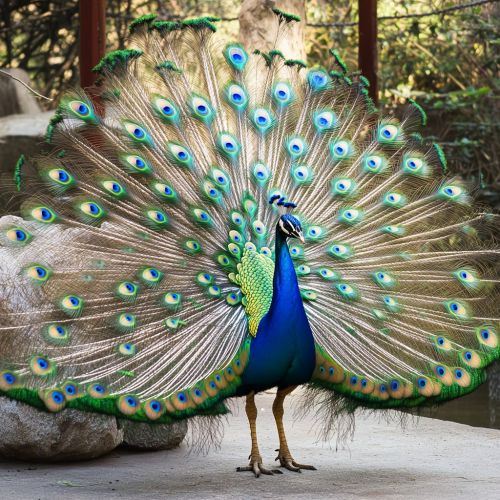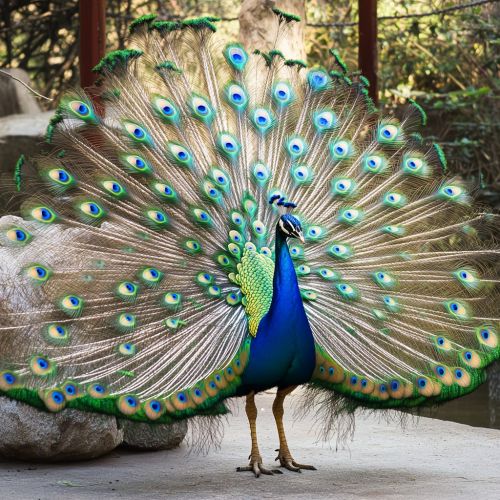Evolution of Animal Communication
Introduction
The evolution of animal communication is a complex and multifaceted topic that encompasses the development and diversification of signaling systems among animals. Communication in animals involves the transmission of information from one individual to another, influencing the behavior of the recipient. This article delves into the various aspects of animal communication, tracing its evolutionary origins, mechanisms, and functions.
Origins of Animal Communication
The origins of animal communication can be traced back to the earliest forms of life. Primitive organisms likely used simple chemical signals to coordinate activities such as reproduction and foraging. Over time, these signaling systems became more sophisticated, leading to the diverse array of communication methods observed in modern animals.
Chemical Communication
Chemical communication is one of the oldest and most widespread forms of signaling in the animal kingdom. Pheromones, which are chemicals released by an individual that affect the behavior or physiology of another individual of the same species, play a crucial role in many animal interactions. For example, ants use pheromones to mark trails to food sources, while mammals may use them to signal reproductive status.
Visual Communication
Visual signals are another ancient form of communication. Early visual signals likely involved simple changes in body coloration or posture. Over evolutionary time, these signals became more elaborate, incorporating complex patterns, movements, and displays. For instance, the bright plumage of birds and the intricate courtship dances of certain fish species are examples of evolved visual communication.


Mechanisms of Communication
Animal communication involves a variety of mechanisms, each suited to different environmental contexts and sensory modalities. These mechanisms can be broadly categorized into chemical, visual, auditory, and tactile communication.
Auditory Communication
Auditory communication involves the use of sound to convey information. This form of communication is particularly effective in environments where visual signals may be obstructed, such as dense forests or murky waters. Birds, for instance, use songs and calls to establish territories and attract mates, while cetaceans like whales use complex vocalizations to communicate over long distances.
Tactile Communication
Tactile communication involves physical contact between individuals. This form of communication is often used in social bonding and coordination of group activities. Primates, for example, engage in grooming behaviors that reinforce social bonds and establish hierarchies within groups.
Evolutionary Drivers of Communication
The evolution of animal communication has been driven by a variety of factors, including environmental pressures, social structures, and reproductive strategies.
Environmental Pressures
Environmental factors such as habitat type and availability of resources have a significant impact on the evolution of communication systems. Animals living in dense forests may rely more on auditory and chemical signals, while those in open habitats may use visual signals more extensively.
Social Structures
The complexity of social structures within a species can also drive the evolution of communication. Species with intricate social hierarchies, such as primates and social insects, often develop sophisticated communication systems to manage social interactions and coordinate group activities.
Reproductive Strategies
Reproductive strategies play a crucial role in the evolution of communication. Sexual selection, in particular, has led to the development of elaborate signals used in mate attraction and competition. The peacock's tail, for example, is a result of sexual selection, where females prefer males with more extravagant displays.
Functions of Communication
Animal communication serves a variety of functions that are essential for survival and reproduction. These functions can be broadly categorized into mating, territoriality, social bonding, and coordination of group activities.
Mating
Communication plays a vital role in mating behaviors. Signals used in mate attraction and selection can convey information about an individual's fitness, genetic quality, and readiness to reproduce. For example, the complex songs of male birds often serve to attract females and deter rival males.
Territoriality
Territorial animals use communication to establish and defend their territories. Signals such as scent markings, vocalizations, and visual displays are used to deter intruders and assert dominance over a particular area. Wolves, for instance, use howling to communicate territorial boundaries to other packs.
Social Bonding
In social species, communication is essential for maintaining group cohesion and reinforcing social bonds. Behaviors such as grooming, vocalizations, and physical contact help to establish and maintain relationships within the group. Dolphins, for example, use a variety of vocalizations and physical interactions to strengthen social bonds.
Coordination of Group Activities
Communication is also crucial for coordinating group activities such as hunting, foraging, and migration. Animals use a range of signals to convey information about the location of resources, the presence of predators, and the timing of group movements. Honeybees, for instance, perform the "waggle dance" to communicate the location of food sources to other members of the hive.
Evolutionary Pathways
The evolution of animal communication has followed multiple pathways, leading to the diverse signaling systems observed today. These pathways can be influenced by genetic, developmental, and ecological factors.
Genetic Factors
Genetic mutations and variations can lead to the development of new communication signals. Natural selection then acts on these variations, favoring signals that enhance survival and reproductive success. For example, variations in bird song patterns can arise from genetic differences, and those that are more effective in attracting mates may become more prevalent in the population.
Developmental Factors
Developmental processes also play a role in the evolution of communication. The way an organism develops can influence the types of signals it can produce and perceive. For instance, the development of specialized vocal organs in birds has enabled the evolution of complex songs.
Ecological Factors
Ecological factors such as predation pressure and resource availability can shape the evolution of communication. Animals may evolve signals that are less detectable by predators or that are more effective in locating scarce resources. For example, some prey species have evolved cryptic coloration and behaviors to avoid detection by predators.
Case Studies
To illustrate the principles of animal communication evolution, several case studies are presented below.
Birdsong Evolution
Birdsong is a well-studied example of animal communication. The evolution of birdsong involves both genetic and environmental factors. Songbirds learn their songs through a process of imitation and practice, and variations in song patterns can arise from both genetic differences and environmental influences. Sexual selection plays a significant role in shaping birdsong, as females often prefer males with more complex and elaborate songs.
Primate Communication
Primates exhibit a wide range of communication behaviors, including vocalizations, facial expressions, and gestures. The evolution of primate communication is closely linked to their social structures and cognitive abilities. For example, chimpanzees use a variety of vocalizations and gestures to communicate with each other, and their ability to understand and respond to these signals is indicative of their advanced cognitive capabilities.
Insect Communication
Insects, particularly social insects like ants, bees, and termites, have evolved highly sophisticated communication systems. Chemical signals, such as pheromones, play a central role in coordinating colony activities. The evolution of these communication systems is driven by the need for efficient coordination and cooperation within the colony.
Conclusion
The evolution of animal communication is a dynamic and ongoing process influenced by a myriad of factors. From the simplest chemical signals to the most complex vocalizations and visual displays, communication systems have evolved to meet the specific needs and challenges faced by different species. Understanding the evolutionary pathways and mechanisms underlying animal communication provides valuable insights into the behavior and ecology of animals.
